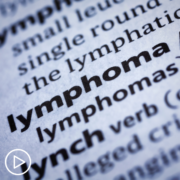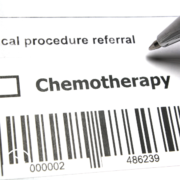What Are the Stages of Follicular Lymphoma?
What Are the Stages of Follicular Lymphoma? from Patient Empowerment Network on Vimeo.
How does follicular lymphoma progress? Expert Dr. Tycel Phillips discusses the disease’s stages and the impact on treatment options.
Dr. Tycel Jovelle Phillips is a Medical Oncologist in the Hematology Clinic at The University of Michigan Rogel Cancer Center. Learn more about Dr. Phillips, here.
See More from The Pro-Active Follicular Lymphoma Patient Toolkit
Related Programs:

|

|

What Factors Are Considered When Choosing a Follicular Lymphoma Treatment? |
Transcript:
Katherine:
You’ve touched upon this briefly, but what are the stages of follicular lymphoma? How does it progress?
Dr. Phillips:
So, when we talk about follicular lymphoma, so, in stages there are four stages. Stage one, which means it’s localized in one general area. Or potentially into one organ. Stage two means that it is on one side of the diaphragm. So, we use your diaphragm as sort of a dividing point. Sort of like a Mason-Dixon line of the body. So, if it’s all on one side, it’s a stage two. If you have disease both above and below the diaphragm, you’d be considered to be stage three. Stage four indicates that you either have an organ involved in a nonadjacent lymph node.
So, let’s just say there’s a spot in your liver and you have a lymph node in your neck, or if your bone marrow is involved. For the most part, most patients with follicular lymphoma, because again, when develops, it doesn’t really develop with symptoms and typically is in there for quite a bit of time. Most patients will have what we consider to be advanced stage of this disease, meaning it’s stage three or four. Because the cancer has quite a bit of time to grow and move around before we find it.
It also comes in a set of grades. So, stage and grades are different. Stage is location, grade is what the pathologist sort of looks at when he looks under a microscope – how angry or big the cells look. So, we typically divide it into grades one and two; it’s very hard to separate one and two, so it’s generally grouped together. Which means there are mostly small round cells and very few big cells. And then we have grade 3A and grade 3B. And grade 3A means that when they look at it under the microscope, they see a fair number of larger cells which means that’s probably a bit more aggressive than the grade one to two.
And grade 3B is sort of separated into a category of its own. And we tend to treat grade 3B as a more aggressive lymphoma. we treat that very closely, like we treat the diffuse large B-cell lymphomas. So, grade 3B is in a category of its own, and then grades one to two and grade three are sort of clumped together.










